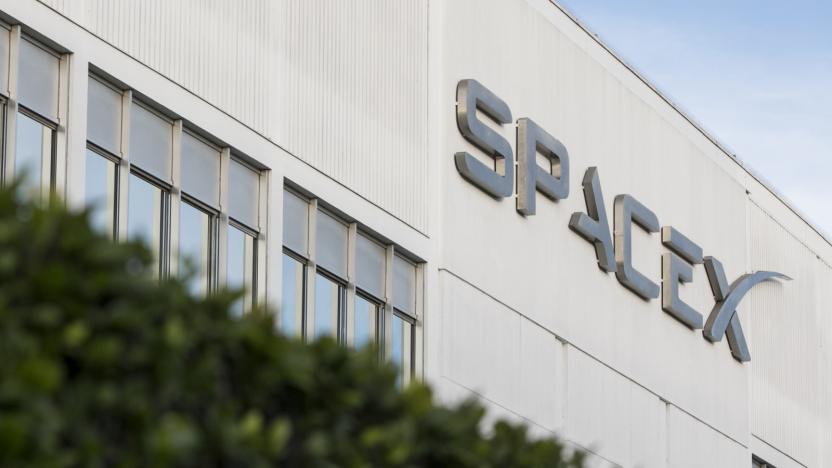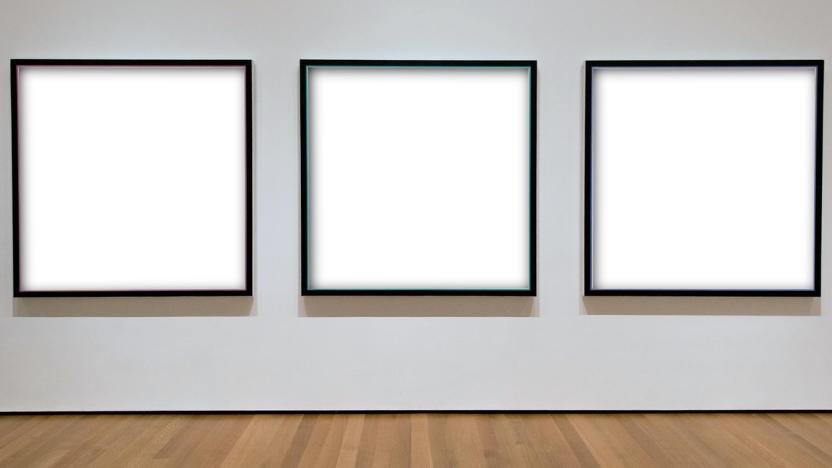forgery
Latest

An engineer allegedly falsified inspection reports for SpaceX rockets
Federal investigators believe a quality assurance engineer responsible for inspecting parts for SpaceX had been falsifying reports. The engineer works for New York-based PMI Industries and is accused of forging signatures on at least 38 inspection reports for parts intended for use in SpaceX's Falcon 9 and Falcon Heavy rockets. Authorities also found at least 76 parts that were rejected or not inspected but shipped to SpaceX anyway.

AI spots art fakes by examining a single brushstroke
Attempts at art forgeries run from the laughable (remember Monkey Jesus?) to the exquisite (this ambiguous Baroque masterpiece nearly cost a gallery €120 million last year), and traditionally the art world has had to rely on expert knowledge and supporting documentation to weed out the real from the fake. But now researchers claim AI is able to identify forgeries simply by looking at the brushstrokes used to compose a piece.

Fraudster's phoney email tricked prison into releasing him
In the movies, a daring prison escape usually involves a carefully orchestrated plan filled with intricate tunnels, ingenious bribes and chaotic distractions. But for Neil Moore, performing a similar breakout in the real world was so much simpler. With the aid of a smuggled mobile phone, he was able to set up an email address with a domain that closely resembled Her Majesty's Court Service. He then sent a forged letter approving his release to the prison, hoping they wouldn't inspect the document or sender's credentials too closely. Low and behold, the wardens were convinced of its authenticity (despite misspelling "Southwark" Crown Court) and Moore walked free in March 2014.

IBM brings the fight to counterfeiters with nano-sized authentication methods (video)
As counterfeiters continue to up their game, technology's quest for the ultimate method of proving authenticity goes on. We've seen ideas at the nano level before, but IBM thinks its latest research might be so difficult to reverse engineer, that it's impossible for forgers to reproduce. IBM scientist Dr. Heiko Wolf explains that the basic principle involves using the surface tension of water to orient nanorods on a stamp, which can then be printed onto any surface. These nanorods are so small that gravity alone isn't enough to place the particles into predetermined patterns, such as corporate logos. IBM's researchers have also patented a related nano-patterning method that uses fluorescent spheres that can take the color red, blue or green. These then arrange themselves in a completely random order, which is mathematically so difficult to replicate it's known as PUF (physically unclonable function). Both methods can be applied to a broad selection of objects, making them ideal candidates for anti-counterfeit detection for everything from diamonds to passports -- all that's needed to verify authenticity is an optical microscope. Don't get your Picasso out of the vault just yet though, as it's estimated that it'll be another five years or so before the technology will find its way to market.

New 'nano-code' could help fight banknote forgery by embedding invisible QR-style ciphers
We've all seen (and probably used) QR codes at some point. And, handy as they are for quick linking to apps, or value added content etc, there's usually not much else going on. Unless you're one of the team at South Dakota School of Mines and Technology, that is, who have created a tiny version of the quadrilateral-codes that could be used to spot counterfeit money. The invention uses nanoparticles combined with blue and green fluorescent ink, and can be sprayed onto surfaces such as glass, plastic film, or of course, pictures of American presidents. The nano-code remains invisible until placed under a near-infrared laser, making it ideal for helping spot legit bank notes. The creators say they have done significant wear tests, which suggest that it's durable, but they also accept that eventually criminal technology could eventually catch up, in the constant cat and mouse game between mandated money producers and forgers. Whether there'd be links to the Benjamin Franklin Wiki page is unclear.

Scientists use GC-MS to analyze famous paintings, pick out KIRFs
The debate raged for years (at least in those circles where things like this inspire rage): Which museum had the genuine article? Both the UK National Gallery and the Carnegie Museum of Art in Pittsburgh laid claim to Virgin and Child with an Angel by Renaissance artist Francesco Francia, and most experts agreed that the one in London was legit. That is, until last year when the organic chemistry of the painting was studied using something called a gas-chromatography-mass-spectrometer. In the hands of researchers, a GC-MS is used to determine the composition and characteristics of paint binding media, resins, varnishes, and obscure pencil marks -- which, in the case of the Francia, proved that the painting is in fact a 19th century forgery (graphite not being available to Francia in 16th century Italy). Don't feel bad, London. We've all been fooled by international art forgers at some point.

The Northrend map forgery
Wowguru has recently posted a highly realistic-looking map of Northrend. When I last wrote about the expansion of the map of Azeroth and Northrend's likelihood as an expansion, Kor was kind enough to scan his copy of the Lands of Mystery RPG book for us. If you compare the two images, you'll see a lot of discrepancies between the two. Cities seem misaligned or completely missing. Also, this map makes it appear as if there will be two large cities, centers for two possible races, which isn't likely either. This map could be a fake, or it could be a mock up for developer use while they finalize the layout of the continent. The fonts do look a bit off from the maps currently in the game, and there appear to be reused images in the corners, which again points to something shady. I'm just as excited as anyone for information on the upcoming expansion. I just don't think this is it. [via Wowguru]

Worst iPhone mockup ever utilizes Apple Remote
Ok, so Apple mockups seem to surface every other week or so, and while some renditions are utterly believable, there are a few that take the cake when it comes to eliciting a grin. The latest iPhone forgery (vid after the break) is brought to us courtesy of an (unsurprisingly) anonymous individual and YouTube, where an Apple Remote is apparently (and magically, no less) transformed into a cellphone. Aside from the awfully rendered fonts, "2D" appearance, and out-of-sync "clicks," we highly doubt Apple would create a mobile based on a Front Row controller. Regardless, we thank the dear creator for giving us such a hearty laugh, but this unfortunately won't quite make the cut for FCC Fridays.[Via TUAW]




